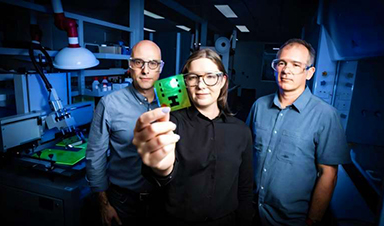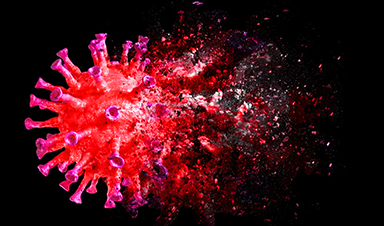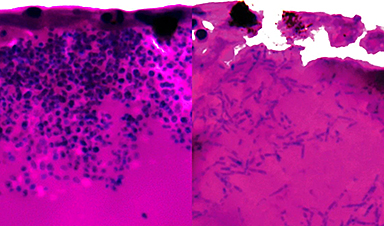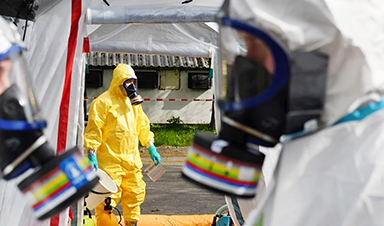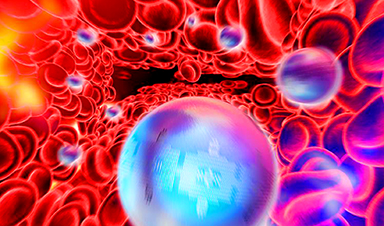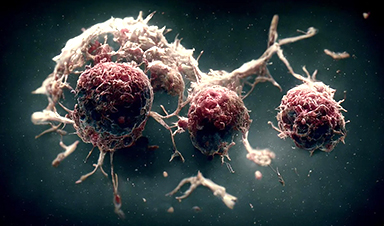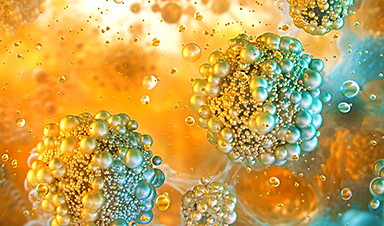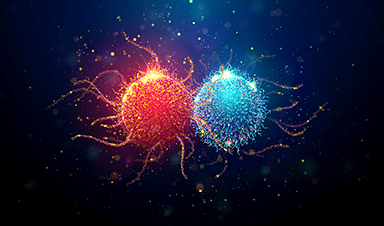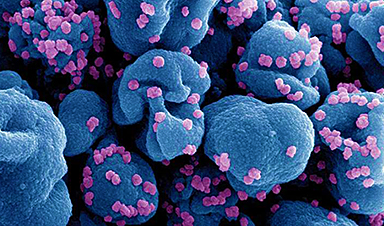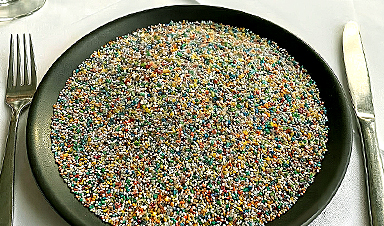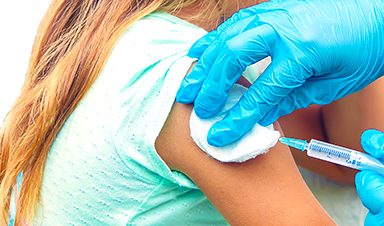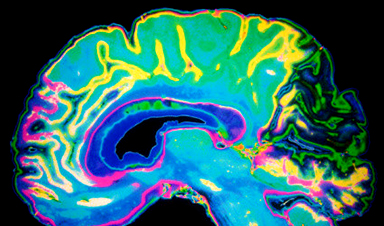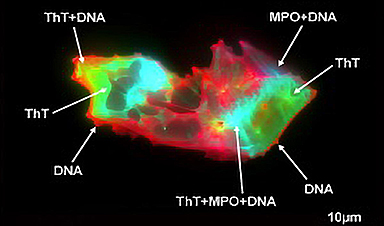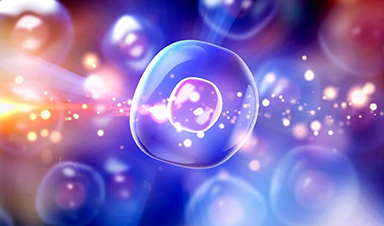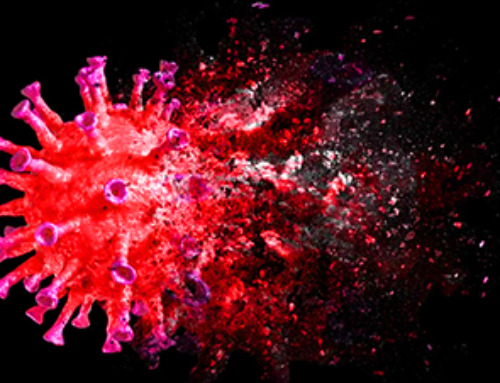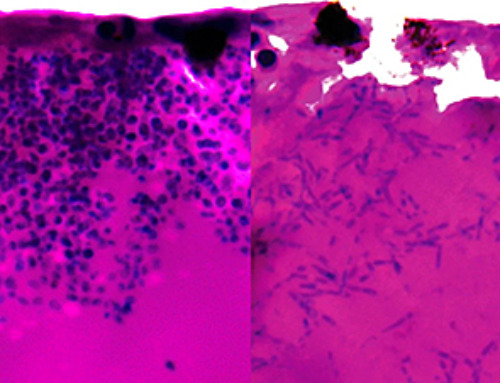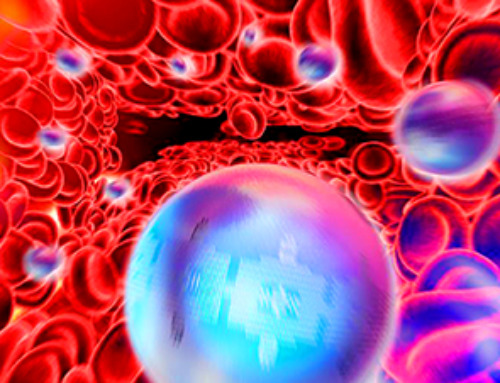An international research team, led by the University of Wollongong (UOW), has found wearable organic X-ray sensors could offer safer radiotherapy protocols for cancer patients.
More than 400 people are diagnosed with cancer every day in Australia and 50% of these people will go on to be treated with radiotherapy. The side-effects of cancer treatment, including radiation, can be debilitating.
Dr. Jessie Posar from UOW’s School of Physics is leading the research team exploring the behavior of organic X-ray sensors. Their paper “Flexible Organic X-Ray Sensors: Solving the Key Constraints of PET Substrates,” published today (November 22) in Advanced Functional Materials, shows promising results.
“Radiotherapy aims to use an external beam of ionizing radiation to kill or damage cancer cells without damaging surrounding healthy cells or organs. This requires precise delivery of the treatment protocols to optimize outcomes and minimize side effects,” Dr. Posar said.
“For example, acute skin toxicity is a common side effect and it’s experienced by 70% to 100% of patients with breast cancer. So, it’s clear that the safe use of radiation in medicine is paramount to better health outcomes for Australians.”
The researchers examined advancements in wearable organic X-ray sensors and found they could potentially transform future treatment options for cancer patients.
“Unlike traditional silicon-based detectors, organic semiconductors are inexpensive, lightweight, printable, stretchable and offer the first biocompatible response to ionizing radiation due to their carbon-based composition,” Dr. Posar said.
“These sensors can directly monitor radiation exposure of the body, allowing real-time adjustments during cancer treatments, minimizing damage to healthy tissues. However, the behavior of organic X-ray sensors is still unknown and that’s what our team wanted to explore.”
The researchers delved into the electronic performance and radiation stability of organic X-ray sensors under clinical radiation beams.
“Under conventional radiotherapy conditions we have demonstrated that organic sensors can detect incident X-rays with no dependence on the energy or dose-rate of the incoming beam, while transmitting 99.8% of the beam,” Dr. Posar said.
“This means it can be worn on a patient to monitor X-ray exposure without impacting treatment protocol to improve safety and clinical outcomes.”
The researchers worked with the Australia’s Nuclear Science and Technology Organization’s (ANSTO) Australian Synchrotron, one of only two places in the world developing a radiation therapy treatment modality. Termed Microbeam Radiation Therapy, the modality aims to treat otherwise untreatable tumors including brain cancer.
Dr. Posar said while it has shown promising treatment outcomes, there is no detector capable of providing quality assurance, limiting treatment efficacy and patient safety.
“Our study demonstrated that flexible organic sensors can detect microbeam X-rays with a precision of 2% and that they exhibit similar radiation tolerance to silicon-based detectors ensuring reliable and long-term use under these dangerous radiation fields,” Dr. Posar said.
“There is still a lot of unknown physics to explore. But our work shows that organic semiconductors exhibit the ideal properties for wearable and personalized X-ray sensing to improve the accuracy and safety in oncology towards tailored radiation delivery that maximizes therapeutic effectiveness and reduces harm to healthy tissues.
“This innovation could revolutionize personalized radiation therapy, offering a new level of safety and effectiveness in patient care.”
The next stage of research will involve data science approaches to accelerate the discovery and translation to real work applications.
Dr. Posar said continued international collaboration will be instrumental in current and future developments in this space. Her colleague and mentor, Professor Marco Petasecca from UOW’s School of Physics, reiterated the importance of collaboration.
“Our team has a long track record of collaboration, which reaches out nationally and internationally with the best groups in the world in the field of developing organic sensors,” Professor Petasecca said.
“We regularly collaborate with Professor Paul Sellin at the University of Surrey; Professor Beaturice Fraboni at the University of Bologna; Dr. Bronson Philippa at James Cook University; Associate Professor Matthew Griffith at the University of South Australia; the Center for Organic Electronics and the Australian National Fabrication Facility Hub at the University of Newcastle.”
Professor Attila Mozer from the Intelligent Polymer Research Institute at UOW said being involved in this research has been an un-learning journey to discover something new.
“The performance of organic diodes exposed to natural sunlight has increased by almost 600% over the last two decades, because of the work of tens of thousands of scientists and hundreds of millions of dollars in funding across the globe over that time,” Professor Mozer said.
“When we started using essentially the same materials for radiation detection, we needed to un-learn most of the well-established paradigms to make the progress we have presented today. It’s been a really fascinating aspect of this research.”
UOW Ph.D. student Aishah Bashiri, with the thesis topic on novel radiation detectors for dosimetry in advanced radiotherapy techniques, is supervised by Dr. Posar, Professor Petasecca and Professor Mozer. She is the paper’s first author.
More information: Aishah Bashiri et al, Flexible Organic X‐Ray Sensors: Solving the Key Constraints of PET Substrates, Advanced Functional Materials (2024). DOI: 10.1002/adfm.202415723
News
AI Helped Scientists Stop a Virus With One Tiny Change
Using AI, researchers identified one tiny molecular interaction that viruses need to infect cells. Disrupting it stopped the virus before infection could begin. Washington State University scientists have uncovered a method to interfere with a key [...]
Deadly Hospital Fungus May Finally Have a Weakness
A deadly, drug-resistant hospital fungus may finally have a weakness—and scientists think they’ve found it. Researchers have identified a genetic process that could open the door to new treatments for a dangerous fungal infection [...]
Fever-Proof Bird Flu Variant Could Fuel the Next Pandemic
Bird flu viruses present a significant risk to humans because they can continue replicating at temperatures higher than a typical fever. Fever is one of the body’s main tools for slowing or stopping viral [...]
What could the future of nanoscience look like?
Society has a lot to thank for nanoscience. From improved health monitoring to reducing the size of electronics, scientists’ ability to delve deeper and better understand chemistry at the nanoscale has opened up numerous [...]
Scientists Melt Cancer’s Hidden “Power Hubs” and Stop Tumor Growth
Researchers discovered that in a rare kidney cancer, RNA builds droplet-like hubs that act as growth control centers inside tumor cells. By engineering a molecular switch to dissolve these hubs, they were able to halt cancer [...]
Platelet-inspired nanoparticles could improve treatment of inflammatory diseases
Scientists have developed platelet-inspired nanoparticles that deliver anti-inflammatory drugs directly to brain-computer interface implants, doubling their effectiveness. Scientists have found a way to improve the performance of brain-computer interface (BCI) electrodes by delivering anti-inflammatory drugs directly [...]
After 150 years, a new chapter in cancer therapy is finally beginning
For decades, researchers have been looking for ways to destroy cancer cells in a targeted manner without further weakening the body. But for many patients whose immune system is severely impaired by chemotherapy or radiation, [...]
Older chemical libraries show promise for fighting resistant strains of COVID-19 virus
SARS‑CoV‑2, the virus that causes COVID-19, continues to mutate, with some newer strains becoming less responsive to current antiviral treatments like Paxlovid. Now, University of California San Diego scientists and an international team of [...]
Lower doses of immunotherapy for skin cancer give better results, study suggests
According to a new study, lower doses of approved immunotherapy for malignant melanoma can give better results against tumors, while reducing side effects. This is reported by researchers at Karolinska Institutet in the Journal of the National [...]
Researchers highlight five pathways through which microplastics can harm the brain
Microplastics could be fueling neurodegenerative diseases like Alzheimer's and Parkinson's, with a new study highlighting five ways microplastics can trigger inflammation and damage in the brain. More than 57 million people live with dementia, [...]
Tiny Metal Nanodots Obliterate Cancer Cells While Largely Sparing Healthy Tissue
Scientists have developed tiny metal-oxide particles that push cancer cells past their stress limits while sparing healthy tissue. An international team led by RMIT University has developed tiny particles called nanodots, crafted from a metallic compound, [...]
Gold Nanoclusters Could Supercharge Quantum Computers
Researchers found that gold “super atoms” can behave like the atoms in top-tier quantum systems—only far easier to scale. These tiny clusters can be customized at the molecular level, offering a powerful, tunable foundation [...]
A single shot of HPV vaccine may be enough to fight cervical cancer, study finds
WASHINGTON -- A single HPV vaccination appears just as effective as two doses at preventing the viral infection that causes cervical cancer, researchers reported Wednesday. HPV, or human papillomavirus, is very common and spread [...]
New technique overcomes technological barrier in 3D brain imaging
Scientists at the Swiss Light Source SLS have succeeded in mapping a piece of brain tissue in 3D at unprecedented resolution using X-rays, non-destructively. The breakthrough overcomes a long-standing technological barrier that had limited [...]
Scientists Uncover Hidden Blood Pattern in Long COVID
Researchers found persistent microclot and NET structures in Long COVID blood that may explain long-lasting symptoms. Researchers examining Long COVID have identified a structural connection between circulating microclots and neutrophil extracellular traps (NETs). The [...]
This Cellular Trick Helps Cancer Spread, but Could Also Stop It
Groups of normal cbiells can sense far into their surroundings, helping explain cancer cell migration. Understanding this ability could lead to new ways to limit tumor spread. The tale of the princess and the [...]
